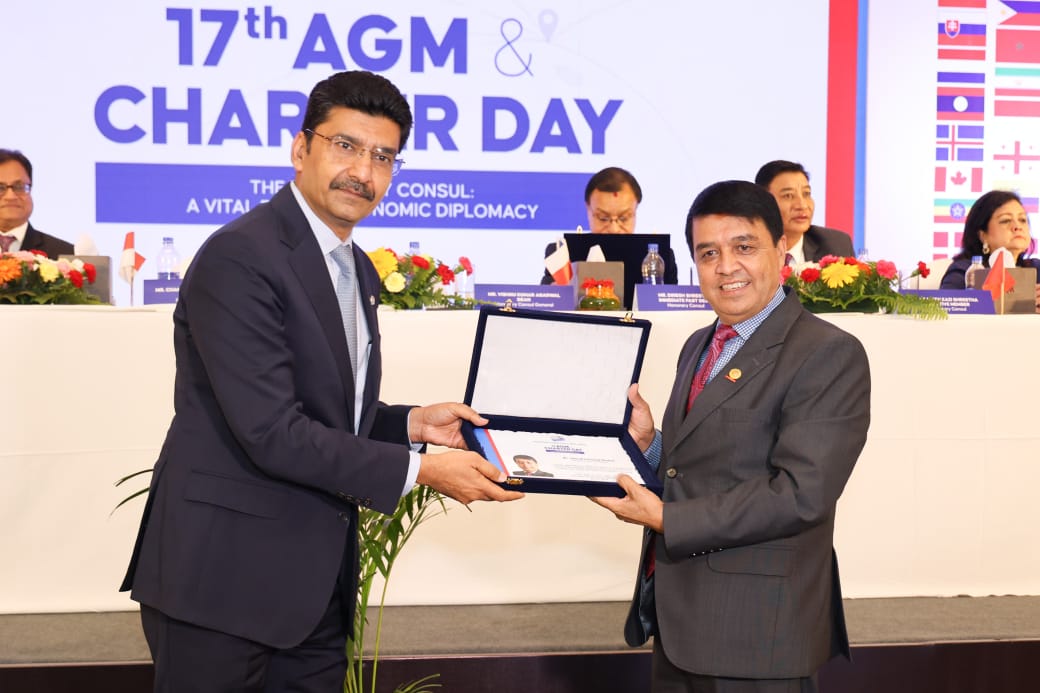Why India and Nepal have to embrace each other more than ever?

Gilbert Chesterton a Novelist and Journalist said, “We make our friends; we make our enemies; but God makes our next door neighbour.” It is very apt for the two neighbours India and Nepal, a bitter tussle in 2015 followed by a lull in the relationship due to the accusation that India was blocking the supply of petrol, medicines, and earthquake relief materials to the mountain country led to poor diplomatic relationships between the two countries.

After a long slumber, both countries have understood their folly and have mended their bilateral relationships thereby healing the old wound. Relationships went to a new high when Nepal’s Prime Minister K.P. Sharma Oli visited Indian at the invitation of India’s Prime Minister Narendra Modi, both proposed a slew of initiatives including agriculture, railway linkages, and inland waterways development.
Those proposals were further cemented during the visit of Prime Minister Modi to Nepal. Two Prime Ministers Jointly inaugurated the check post at Birgunj in Nepal which is inevitable in increasing movement of people and cargo. This integrated check post is likely to multiply the commerce and trade of both countries.
Some other proposals which are likely to become a reality in Kathmandu are the ‘Time-bound rail project, petroleum pipeline, inland waterways for cost-effective transportation of cargo and sea-connectivity.
Chinese Entry
The friction between India and Nepal had benefitted China as an alternative to India for providing physical and financial assistance to the land-locked country. Since the earthquake of 2015 reliance on finance has been at an all-time high for Nepal. China, a creditor with surplus funds was attracted to the lucrative option of building infrastructure including roads and hydropower plants. This was the opportune moment for China to connect Kathmandu to the ambitious, “One Belt, One Road” initiative, despite India raising the red flag on Chinese ambitions.
Poor track record of project completion from the Indian side was another factor. Most of the projects proposed by Nepal a decade back didn’t materialize. In contrast, China’s projects are scattered across the planet and had delivered on promises even at a lower level.
Now What?
At this outset, China’s bid to extend its rail network to Kathmandu or other financial commitments should not be a deterrent to the renewed bilateral relationship between India and Nepal. Nepal should be cognizant about the future security concerns that might happen if the big brother China is given open access to sensitive and strategic areas of investment.
In this context, it is worth studying the case of Kenya where the critics and policymakers after some years of financial aid from China found that the terms of finance were unfavorable and financial assistance from World Bank or African Development Bank for the same projects would be cheaper than the Chinese ones.
A columnist in the Kenyan paper, the Daily Nation newspaper wrote, “If we leave these big projects to the corrupt elite and crafty Chinese contractors, they will bankrupt us,”
China has already made huge investments in the neighbouring countries of India, extending its web of rail and road networks have been a strategy in Sri Lanka, Myanmar, Pakistan and Bangladesh. Most of the rail projects which are enormous in space sneak near the border lines of India sniffing on Sikkim and Arunachal Pradesh.
If the neighbouring countries provide open access to China it is not only a threat to them but also a concern for India. Belatedly, India and Nepal have come closer to build stronger ties but this bonhomie should extend to the complete integration (sea, rail, and road) and strong ties between India and Nepal within the shortest possible time.
It is right that ‘God makes our next door neighbour’, so even though India and Nepal are two nations, we are neighbours and god will never make a mistake.
Rajesh.T.V. is a freelance journalist. He can be reached at freelancejournalistrajesh@gmail.com

"There are mixed results in half-yearly budget progress"

Total government spending amounts to Rs. 667.60 billion in 6 months

"There are promising signs of economic recovery"

Finance Minister Paudel directs to meet revenue target

Suspended Chief Secretary Aryal acquitted in corruption case

Dhakal elected HCCN Dean

Price of salt goes up




_9ce9cWGIjD_f4prhhhnxxxnqcssgdayygw9mucepymfxlkrurogb5c1st16yzypdaiuzw7w_M5aQJB0kpE_7cdzzcqlx6xezuoqkjcfthkht5iwls2lhyigxc4saf6niaheayavknly9eyc_lbkkE9HwwY_ncgwkqjqfvjevi4wu85o2nq72v1lsaqh2yllyznzfat6rt7j4girzwuquwdg_vPiDOt36er_6xbovbhwre7op9ujhl7sczoz6qyq3vo8mlgox8cjwaffhru13ewmegvswlfg_BFNsd3Ydqu_8ufxpfowqp3pozenw5ckc1fujevos4oegxyuutfbz70gxqfzxj5mhnexi6pw.jpg)


Feedback